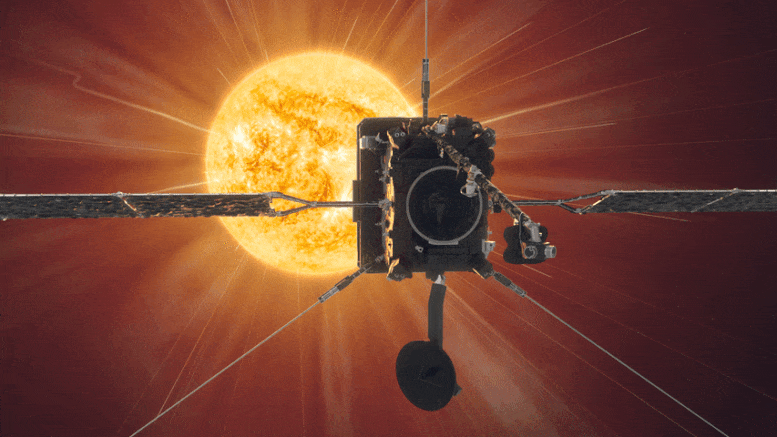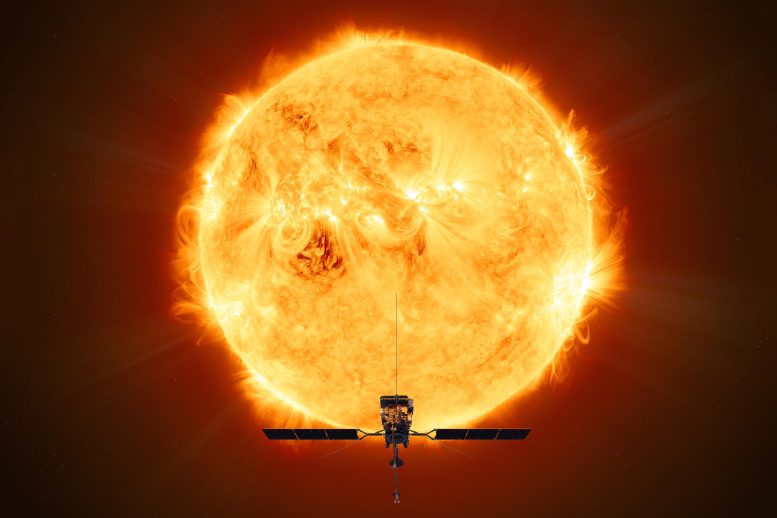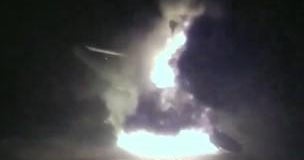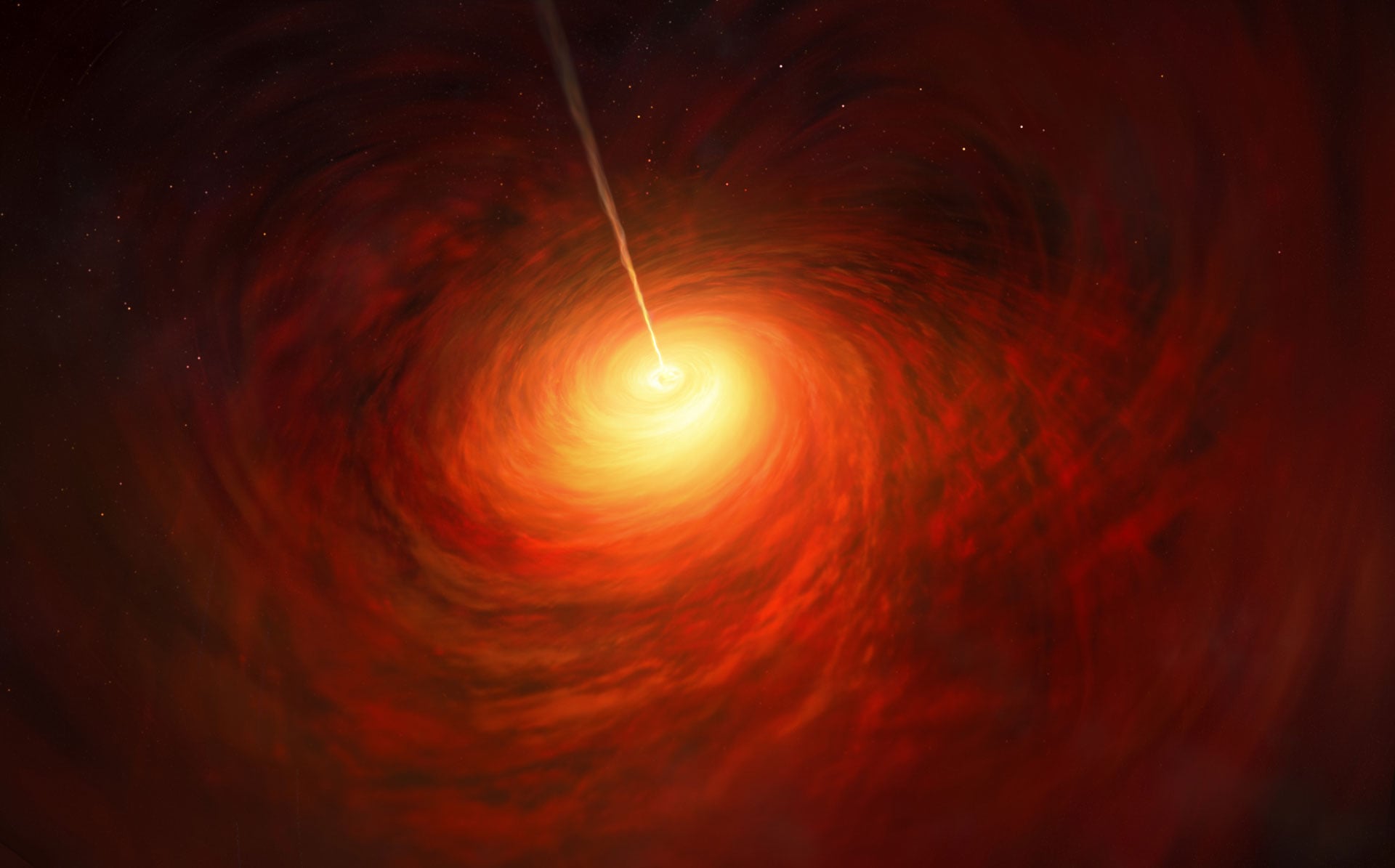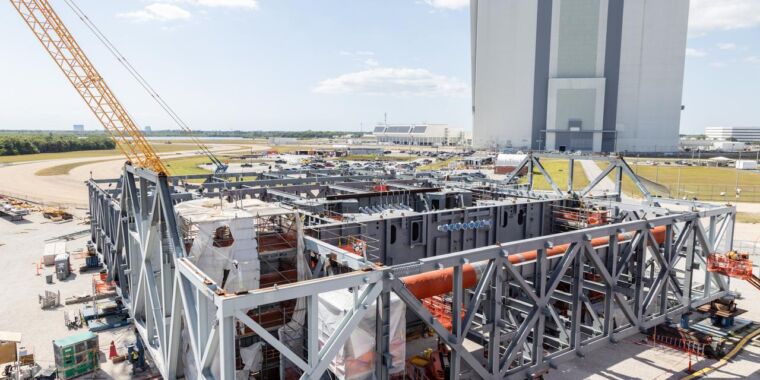Europos kosmoso agentūros „Solar Orbiter“ animacija. Kreditas: ESA / Medialab
Naujausiose „Solar Orbiter“ nuotraukose beprecedentės detalės rodoma visa saulė. Jis buvo nufotografuotas 2022 m. kovo 7 d., kai erdvėlaivis skriejo tiesiai tarp Žemės ir Saulės.
Vienas iš vaizdų, užfiksuotų Extreme Ultraviolet Imager (EUI), yra aukščiausios raiškos visos saulės disko ir išorinės atmosferos – vainiko – vaizdas.
Kitas vaizdas, padarytas SPICE (Spectral Imaging of the Coronal Environment) prietaisu, yra pirmasis pilnas Saulės vaizdas per 50 metų ir geriausias vaizdas, padarytas pagal Lymano beta bangos ilgį ultravioletinės spinduliuotės, kurią skleidžia vandenilio dujos.
Nuotraukos buvo padarytos, kai Saulės orbita buvo maždaug už 75 milijonų kilometrų, pusiaukelėje tarp mūsų pasaulio ir jo pagrindinės žvaigždės. EUI didelės raiškos teleskopas vaizdus fiksuoja tokia didele erdvine raiška, kad tokiu artimu atstumu reikia 25 atskirų vaizdų mozaikos, kuri apimtų visą Saulę. Visas vaizdas buvo nufotografuotas po vieną, daugiau nei keturias valandas, nes kiekviena dalis trunka apie 10 minučių, įskaitant laiką, per kurį erdvėlaivis nukreipia iš vienos dalies į kitą.
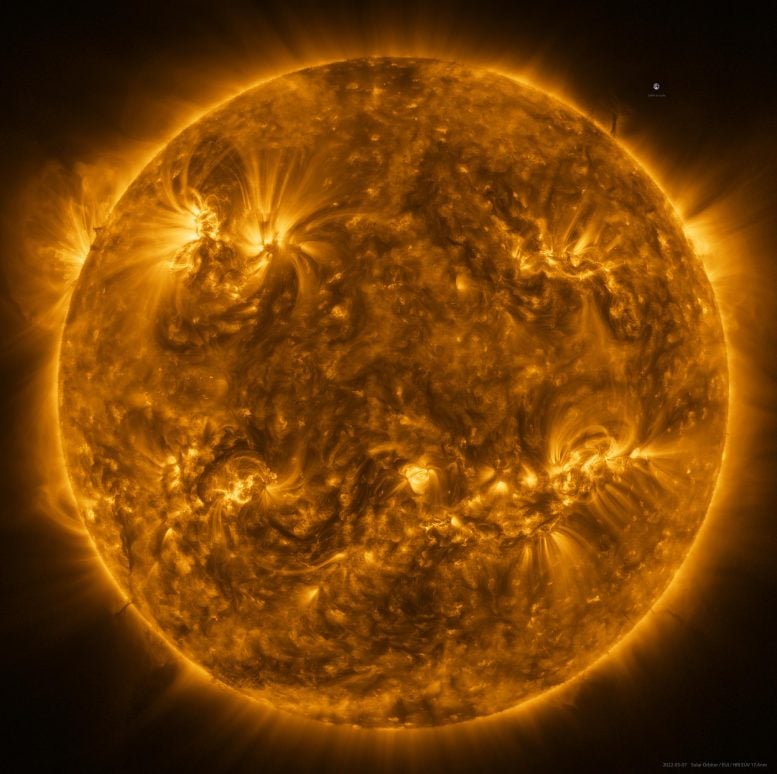
Saulė, kaip Saulės orbita matoma ekstremalioje ultravioletinėje šviesoje iš maždaug 75 milijonų km atstumo. Vaizdas yra 25 atskirų vaizdų mozaika, daryta 2022 m. kovo 7 d. Ultraviolet Imaging Instrument (EUI) didelės raiškos teleskopu. Šis vaizdas buvo padarytas esant 17 nanometrų bangos ilgiui ekstremalioje elektromagnetinio spektro ultravioletinėje srityje, atskleidžiant viršutinę saulės atmosferą – vainiką, kurio temperatūra siekia apie milijoną laipsnių Celsijaus. Taip pat įtrauktas Žemės vaizdas, esantis 2 valandos padėtyje.. Autoriai: ESA ir NASA/Solar Orbiter/EUI komanda; Duomenų tvarkymas: E. Kraaikamp (ROB)
Iš viso, galutinis vaizdas Jame yra daugiau nei 83 milijonai pikselių 9148 x 9112 pikselių tinklelyje. Palyginimui, šio vaizdo skiriamoji geba yra dešimt kartų geresnė, nei gali rodyti 4K televizoriaus ekranas.
EUI vaizduoja Saulę esant 17 nanometrų bangos ilgiui ekstremalioje elektromagnetinio spektro ultravioletinėje srityje. Tai atskleidžia viršutinę saulės atmosferą – vainiką, kurios temperatūra siekia apie milijoną laipsnių[{” attribute=””>Celsius.
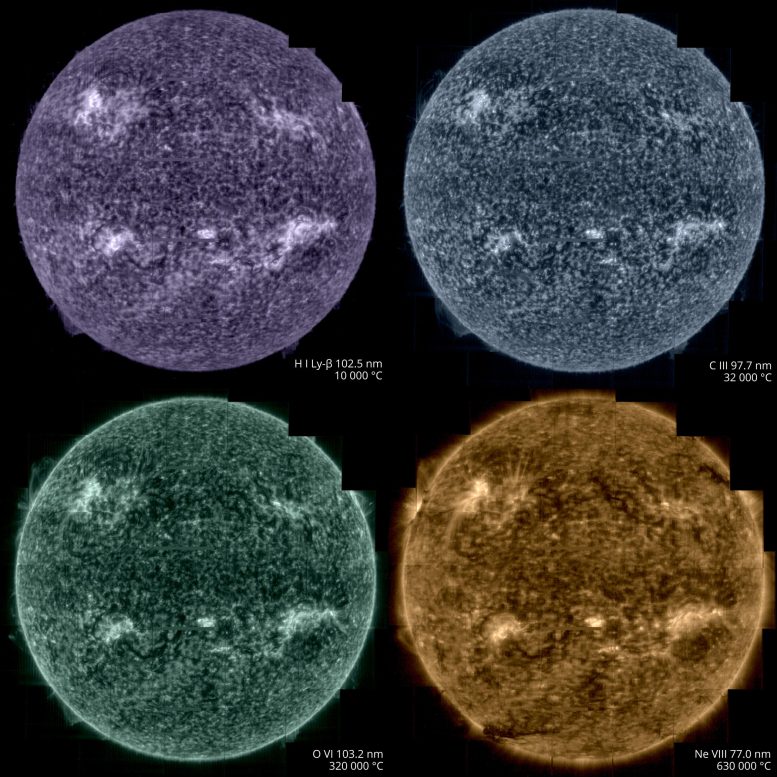
Solar Orbiter took images of the Sun on March 7, from a distance of roughly 75 million kilometres, using its Spectral Imaging of the Coronal Environment (SPICE) instrument. SPICE takes simultaneous “spectral images” at several different wavelengths of the extreme ultraviolet spectrum by scanning its spectrometer slit across a region on the Sun. The different wavelengths recorded correspond to different layers in the Sun’s lower atmosphere. Purple corresponds to hydrogen gas at a temperature of 10,000°C, blue to carbon at 32,000°C, green to oxygen at 320,000°C, yellow to neon at 630,000°C. Each full-Sun image is made up of a mosaic of 25 individual scans. It represents the best full Sun image taken at the Lyman beta wavelength of ultraviolet light that is emitted by hydrogen gas. Credit: ESA & NASA/Solar Orbiter/SPICE team; Data processing: G. Pelouze (IAS)
At the 2 o’clock (near the image of the Earth for scale) and 8 o’clock positions on the edges of the Sun, dark filaments can be seen projecting away from the surface. These ‘prominences’ are prone to erupt, throwing huge quantities of coronal gas into space and creating ‘space weather’ storms.
In addition to EUI, the SPICE instrument was also recording data during the crossing. These too needed to be pieced together as a mosaic.
SPICE is designed to trace the layers in the Sun’s atmosphere from the corona, down to a layer known as the chromosphere, getting closer to the surface. The instrument does this by looking at the different wavelengths of extreme ultraviolet light that come from different atoms.
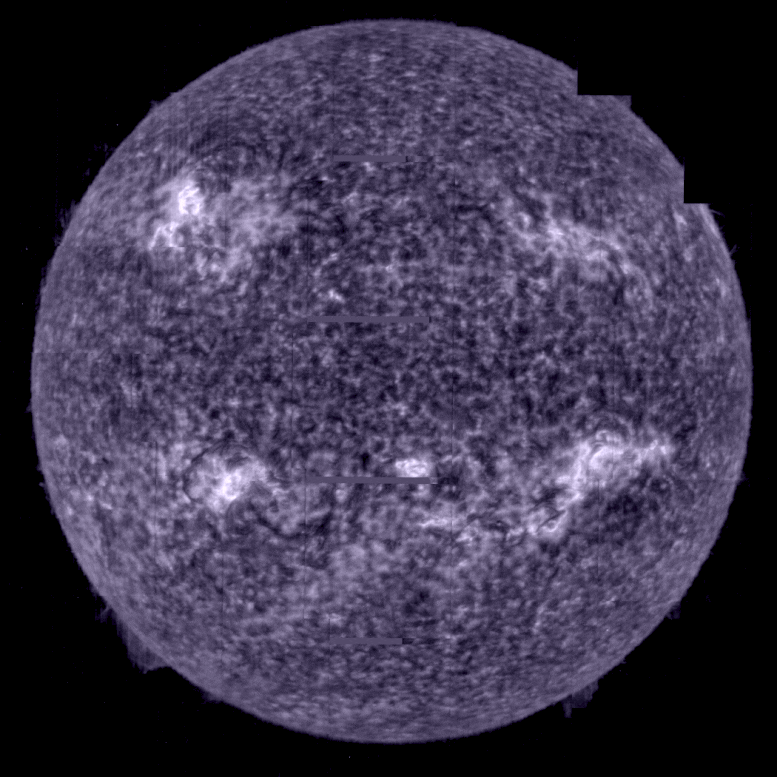
Taking the Sun’s temperature. Credit: ESA & NASA/Solar Orbiter/SPICE team; Data processing: G. Pelouze (IAS)
In the SPICE sequence of images purple corresponds to hydrogen gas at a temperature of 10,000°C, blue to carbon at 32,000°C, green to oxygen at 320,000°C, yellow to neon at 630,000°C.
This will allow solar physicists to trace the extraordinarily powerful eruptions that take place in the corona down through the lower atmospheric layers. It will also allow them to study one of the most puzzling observations about the Sun: how the temperature is rising through the ascending atmospheric layers.
Usually the temperature drops as you move away from a hot object. But above the Sun, the corona reaches a million degrees Celsius whereas the surface is only about 5000°C. Investigating this mystery is one of the key scientific objectives of Solar Orbiter.
The images were taken on 7 March, precisely when Solar Orbiter crossed the Sun-Earth line, so the images can be compared with Earth-bound solar instruments and cross-calibrated. This will make it easier to compare results from different instruments and observatories in future.
On March 26, Solar Orbiter reaches another mission milestone: its first close perihelion. The spacecraft is now inside the orbit of Mercury, the inner planet, taking the highest resolution images of the Sun it can take. It is also recording data on the solar wind of particles that flows outwards from the Sun.
And this is just the start, over the coming years the spacecraft will repeatedly fly this close to the Sun. It will also gradually raise its orientation to view the Sun’s previously unobserved polar regions.
Solar Orbiter is a space mission of international collaboration between ESA and NASA.

“Analitikas. Kūrėjas. Zombių fanatikas. Aistringas kelionių narkomanas. Popkultūros ekspertas. Alkoholio gerbėjas”.

